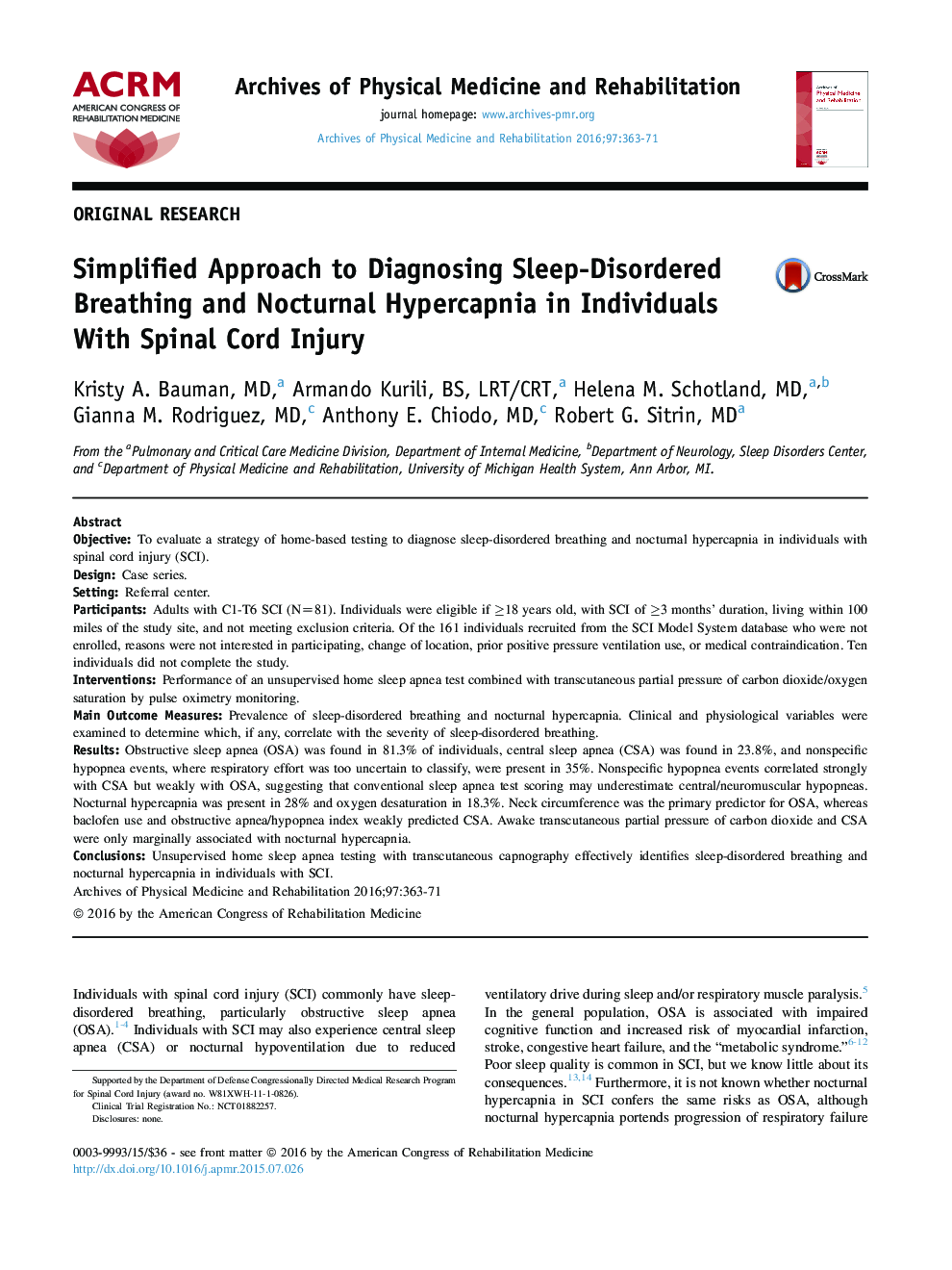| کد مقاله | کد نشریه | سال انتشار | مقاله انگلیسی | نسخه تمام متن |
|---|---|---|---|---|
| 3447961 | 1595670 | 2016 | 9 صفحه PDF | دانلود رایگان |
ObjectiveTo evaluate a strategy of home-based testing to diagnose sleep-disordered breathing and nocturnal hypercapnia in individuals with spinal cord injury (SCI).DesignCase series.SettingReferral center.ParticipantsAdults with C1-T6 SCI (N=81). Individuals were eligible if ≥18 years old, with SCI of ≥3 months' duration, living within 100 miles of the study site, and not meeting exclusion criteria. Of the 161 individuals recruited from the SCI Model System database who were not enrolled, reasons were not interested in participating, change of location, prior positive pressure ventilation use, or medical contraindication. Ten individuals did not complete the study.InterventionsPerformance of an unsupervised home sleep apnea test combined with transcutaneous partial pressure of carbon dioxide/oxygen saturation by pulse oximetry monitoring.Main Outcome MeasuresPrevalence of sleep-disordered breathing and nocturnal hypercapnia. Clinical and physiological variables were examined to determine which, if any, correlate with the severity of sleep-disordered breathing.ResultsObstructive sleep apnea (OSA) was found in 81.3% of individuals, central sleep apnea (CSA) was found in 23.8%, and nonspecific hypopnea events, where respiratory effort was too uncertain to classify, were present in 35%. Nonspecific hypopnea events correlated strongly with CSA but weakly with OSA, suggesting that conventional sleep apnea test scoring may underestimate central/neuromuscular hypopneas. Nocturnal hypercapnia was present in 28% and oxygen desaturation in 18.3%. Neck circumference was the primary predictor for OSA, whereas baclofen use and obstructive apnea/hypopnea index weakly predicted CSA. Awake transcutaneous partial pressure of carbon dioxide and CSA were only marginally associated with nocturnal hypercapnia.ConclusionsUnsupervised home sleep apnea testing with transcutaneous capnography effectively identifies sleep-disordered breathing and nocturnal hypercapnia in individuals with SCI.
Journal: Archives of Physical Medicine and Rehabilitation - Volume 97, Issue 3, March 2016, Pages 363–371
